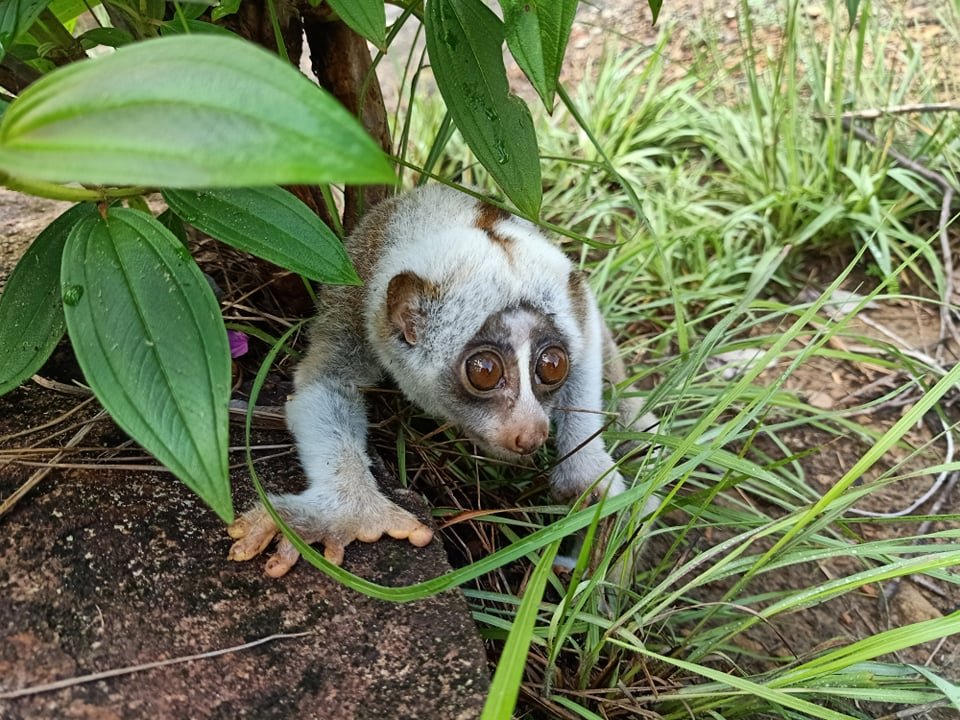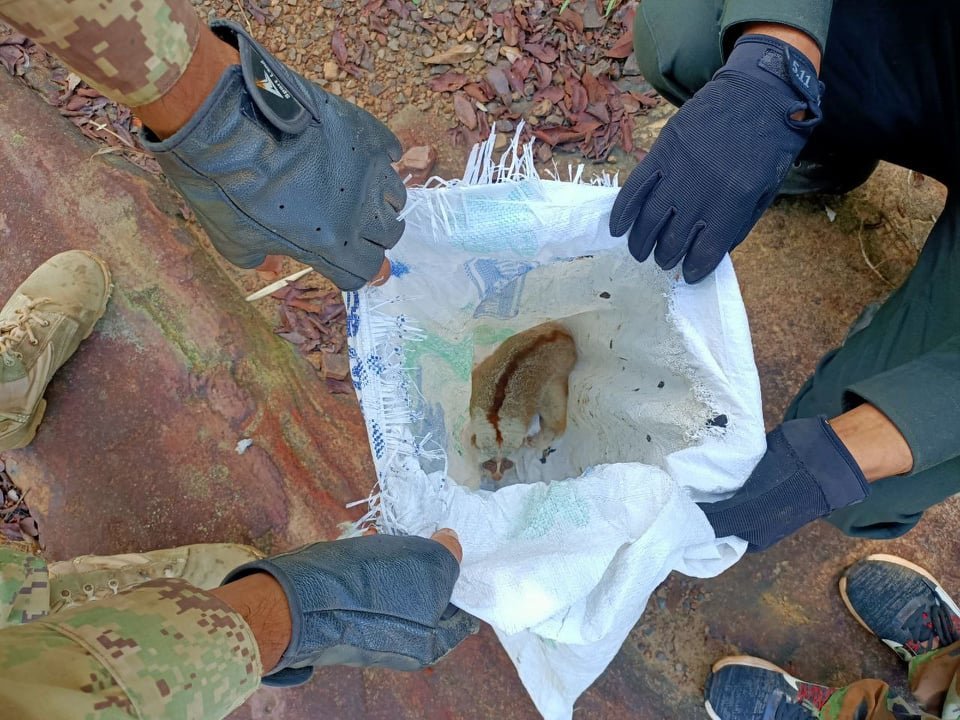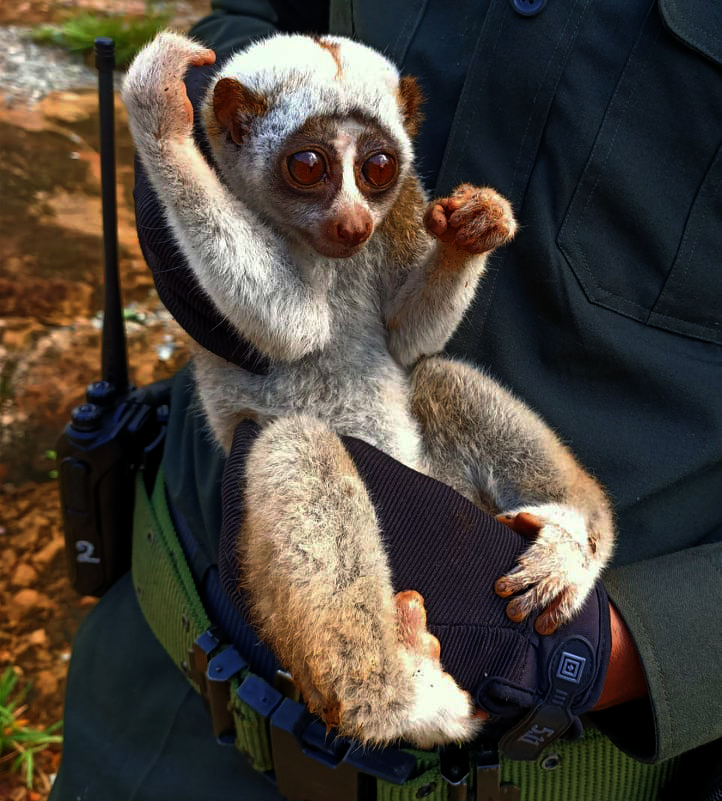By Claire Baker-Munton | Communications Associate
The Wildlife Alliance ranger teams your donations support have been hard at work protecting the Cardamoms and its threatened wildlife – in the first half of 2021 they rescued a total of 199 live animals from poachers! Among the animals saved were a few of the rare Slow Loris.
The Bengal Slow Loris pictured above was rescued by rangers in May 2021. This guy or girl was lucky – it was found uninjured in a poacher’s sack and the rangers were able to release it back into the wild right away. As shown in this release video, it scampered up into the canopy as soon as the ranger placed it on the tree!
Slow Loris are nocturnal primates that have developed a unique response to predators: they can release venom! How does this work? There are 2 steps: first they secrete noxious oil from glands under their armpits. Second, Slow Loris lick those glands. When combined with the oil, the saliva forms a venom.
Cambodia has two species of Slow Loris, the Bengal Slow Loris (Nycticebus bengalensis) and the Pygmy Slow Loris (Nycticebus pygmaeus), both of which are Endangered. Demand from the pet trade and traditional Asian Medicine are driving them to extinction. Since 2013, rangers have rescued a total of 48 Slow Lorises in the Cardamoms.
The pet Loris craze started online when videos, memes and images of Slow Lorises being kept as pets went viral. Unfortunately, the popularity of such content continues to fuel demand to keep them as pets, driving poachers to capture more Lorises from the wild in places like the Cardamoms. On top of this, online content featuring Lorises can encourage harmful behavior towards them. A paper that reviewed 100 such videos found that all showed at least 1 of 5 conditions known to be negative for Lorises (contact with humans or domestic animals, daylight, signs of stress or ill health, unnatural conditions, and isolation). In addition, the authors found that viewers were more likely to “like” videos where a slow loris was kept in the light or displayed signs of stress and conclude that the “prevalence of a positive public opinion of such videos” undermines conservation efforts.
In the Cardamom Rainforest, the other major threat to Slow Lorises is poaching for use in Asian traditional medicine. In Cambodia, Slow Loris is believed to treat a range of medical conditions, from leprosy to low fertility. For example, placing dried loris skin under the house is thought to increase a woman’s chances of getting pregnant. Such uses are unproven, and are a prescription for extinction.
Thank you for supporting ranger patrols that help ensure that Slow Loris, and so many other wildlife species, remain safely in the forest.
Links:
Project reports on GlobalGiving are posted directly to globalgiving.org by Project Leaders as they are completed, generally every 3-4 months. To protect the integrity of these documents, GlobalGiving does not alter them; therefore you may find some language or formatting issues.
If you donate to this project or have donated to this project, you can receive an email when this project posts a report. You can also subscribe for reports without donating.
Support this important cause by creating a personalized fundraising page.
Start a Fundraiser

